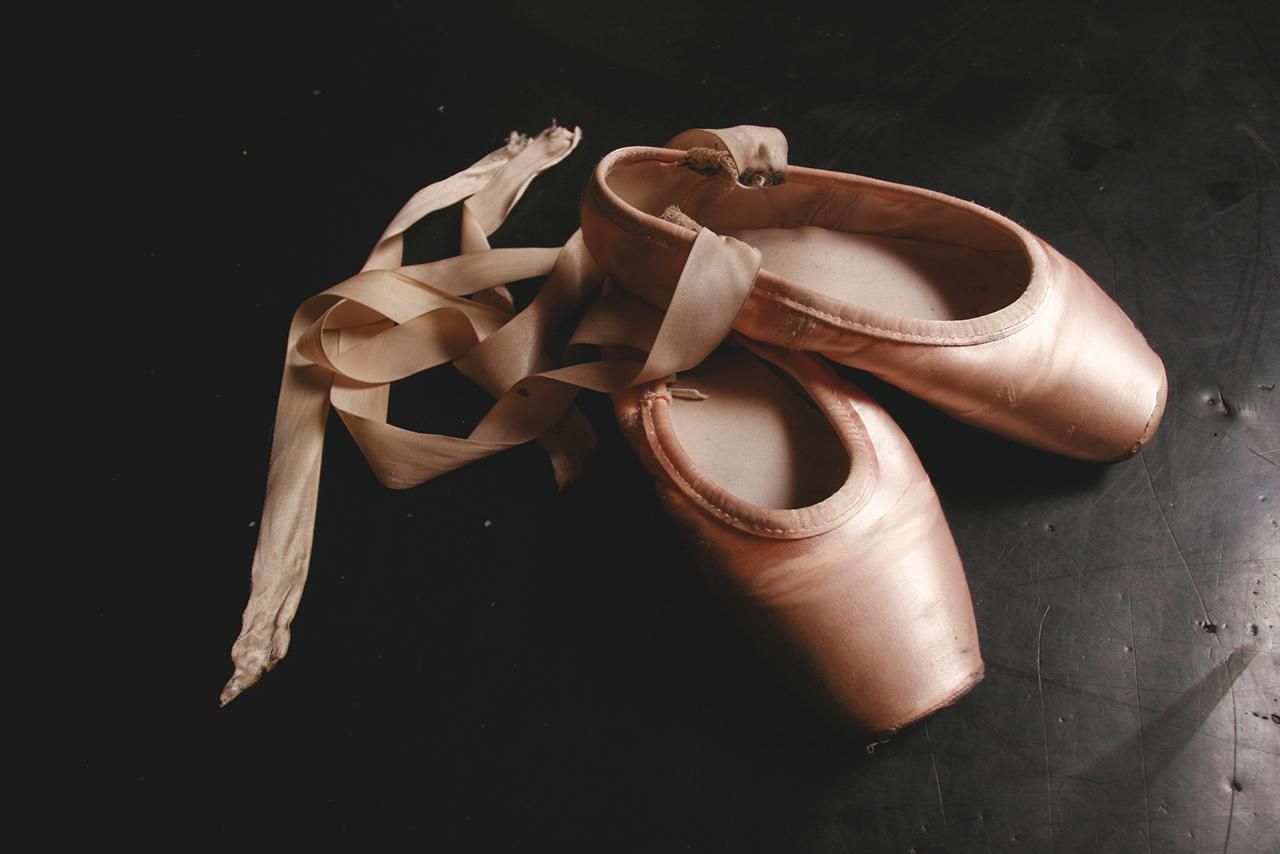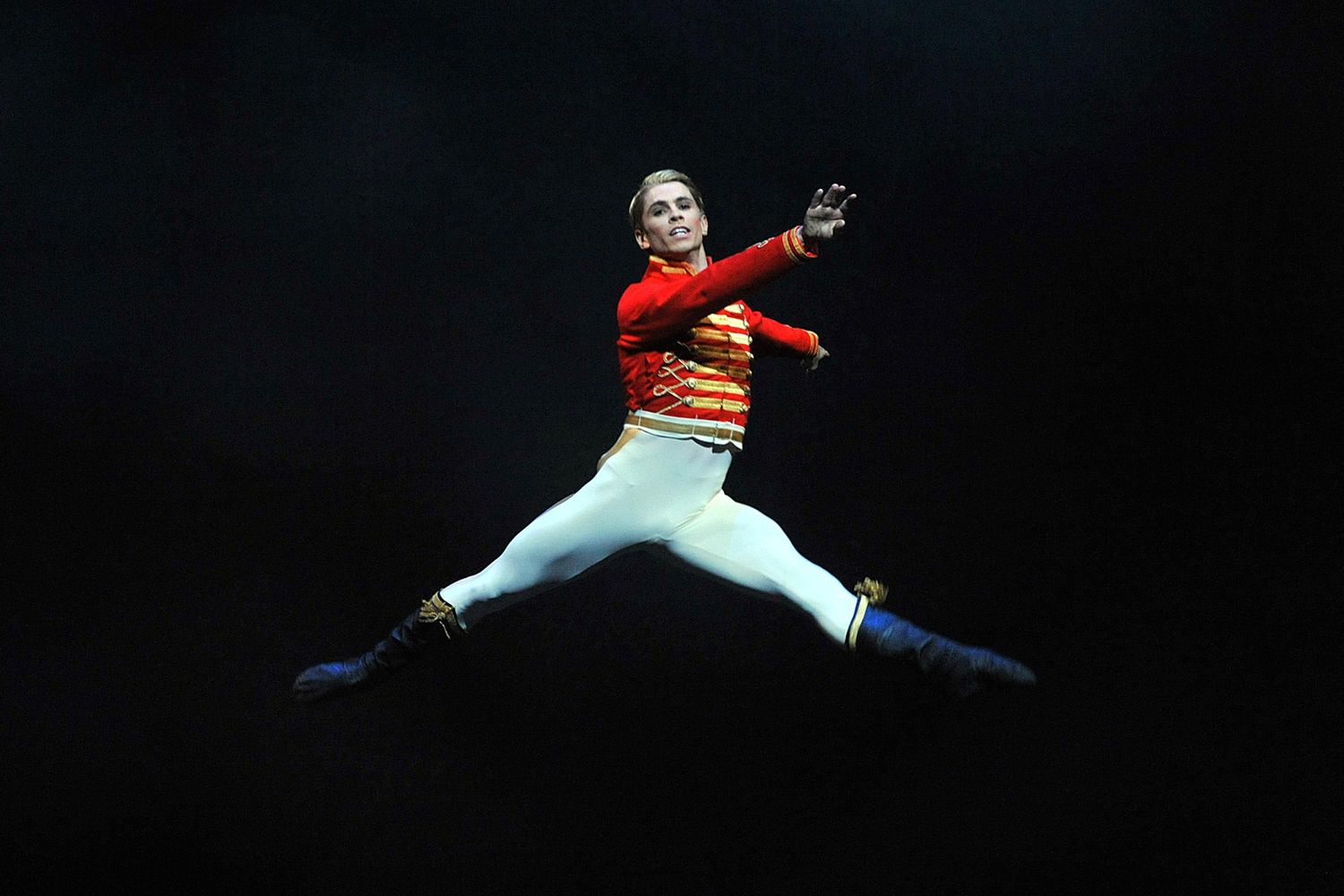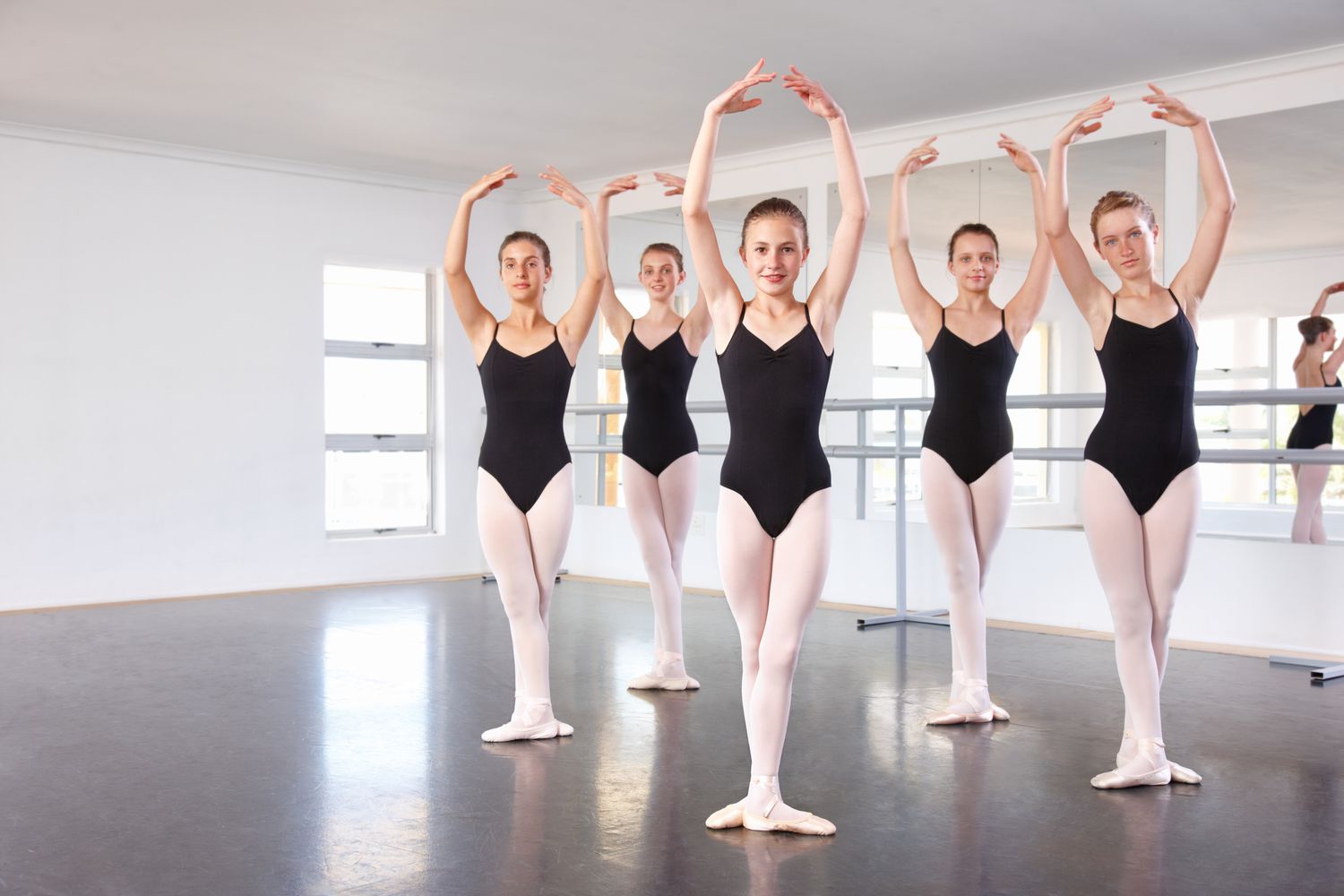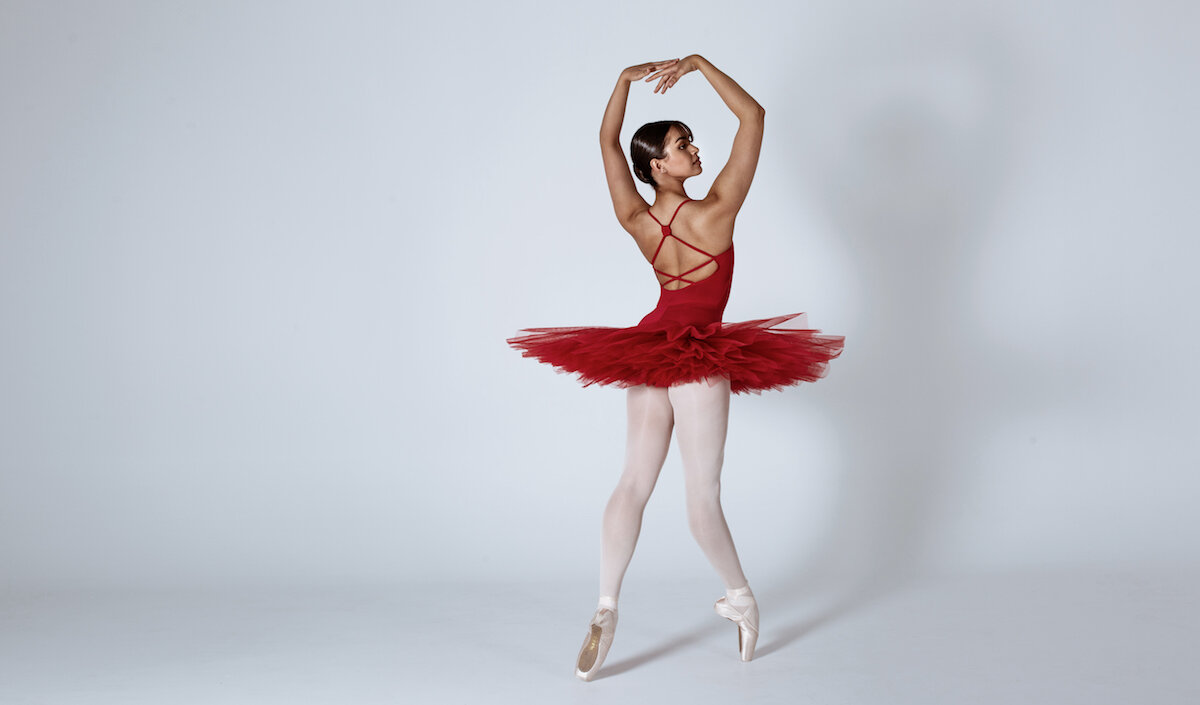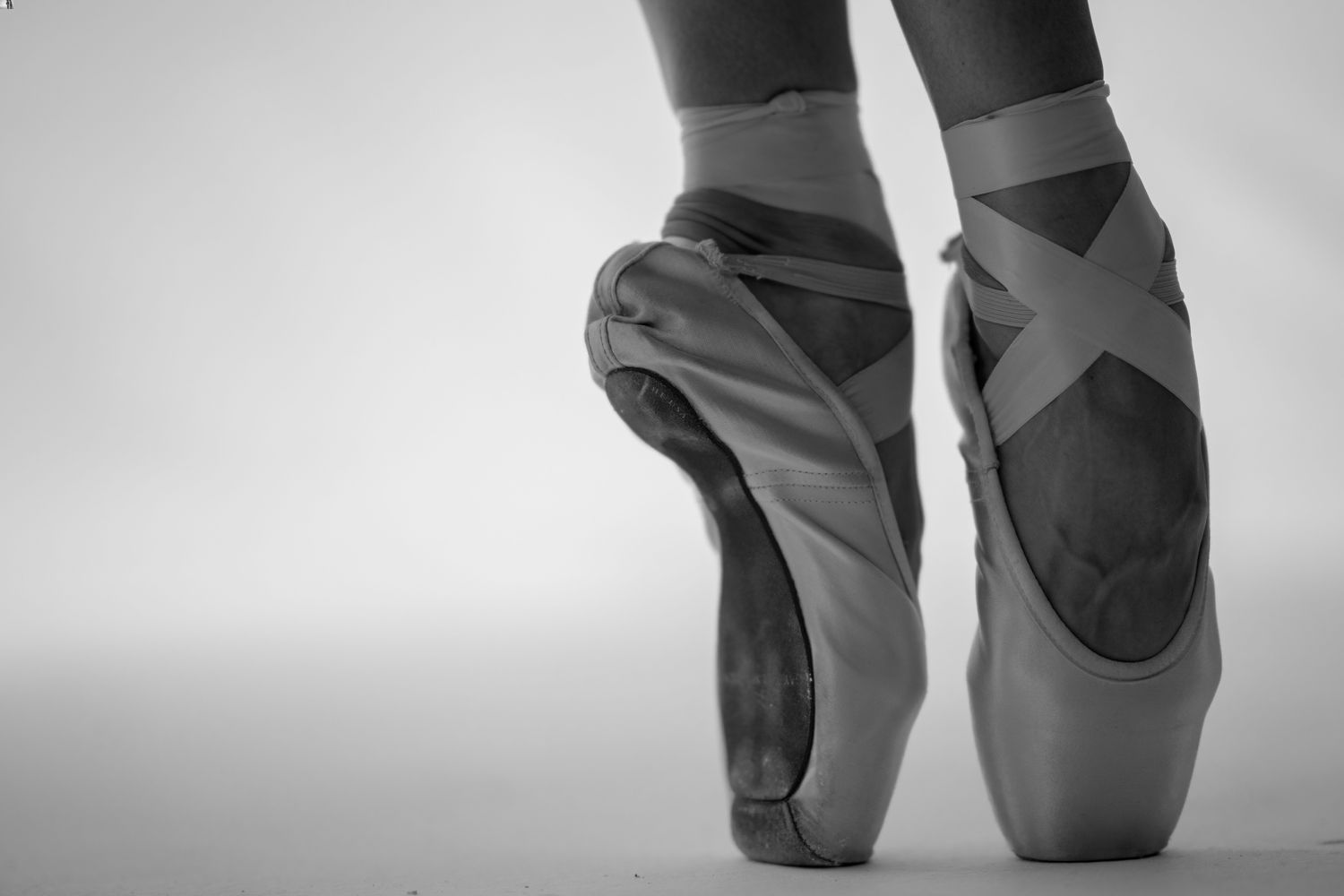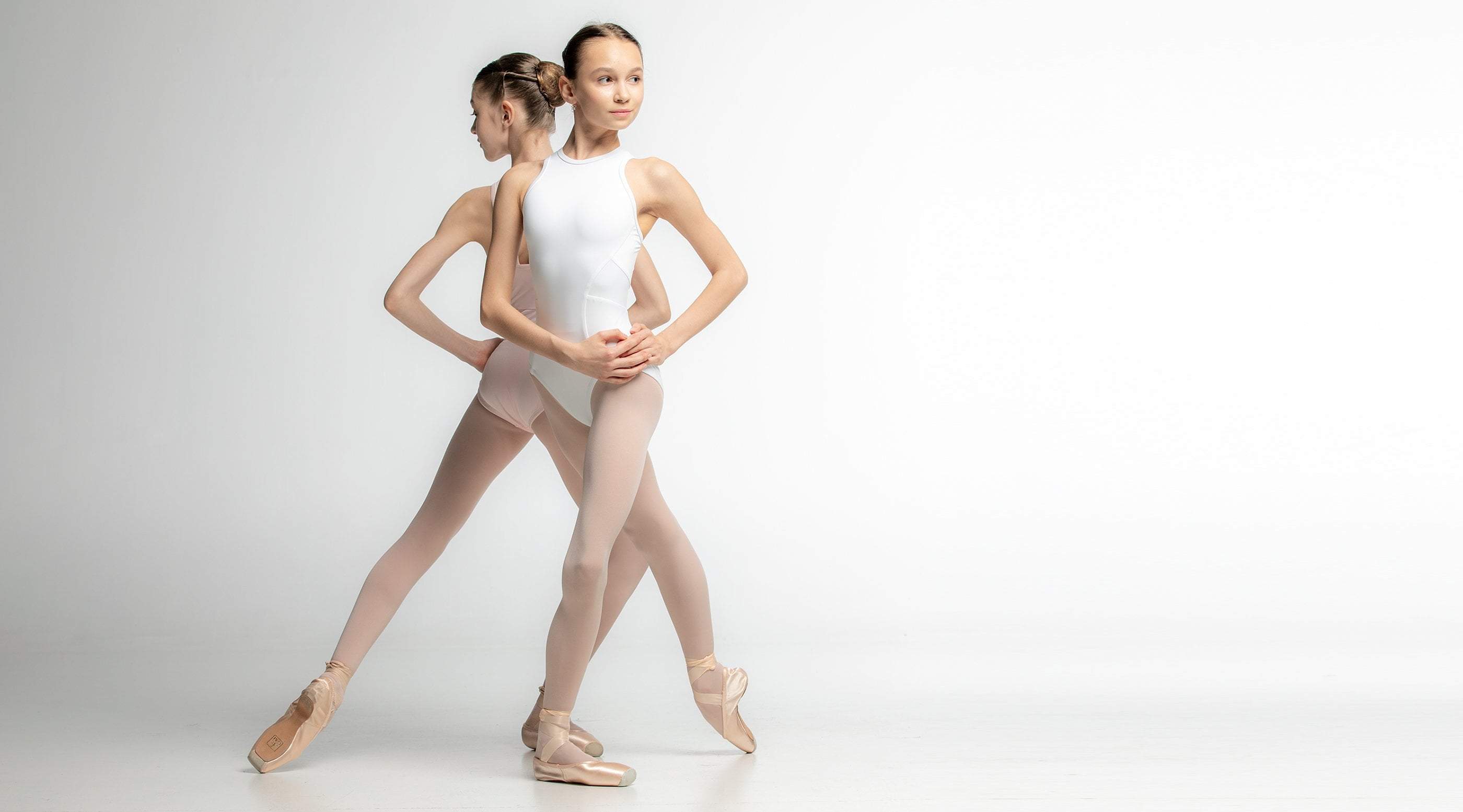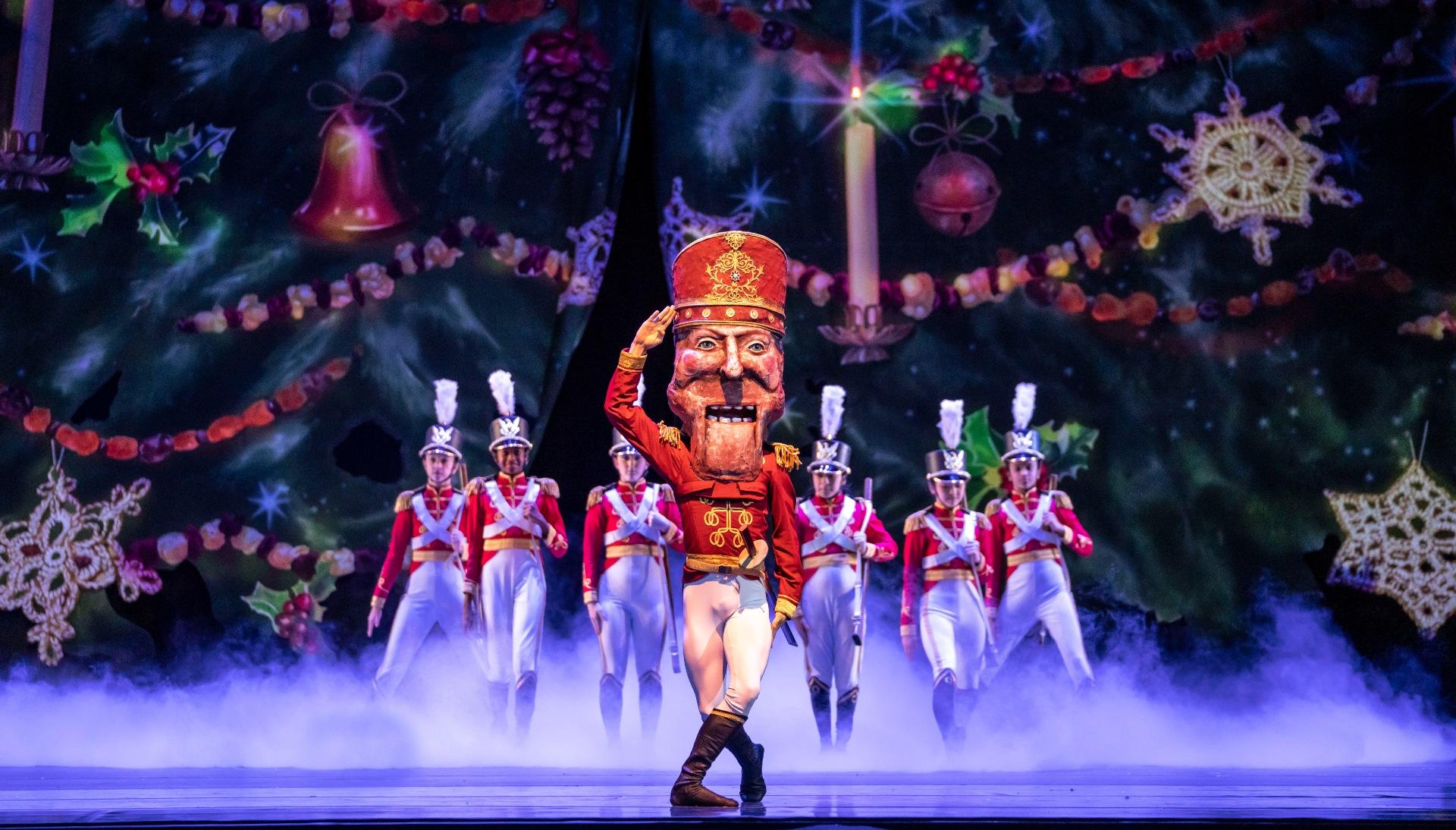Home>Events & Info>Ballet>How To Do A Ballet Leap
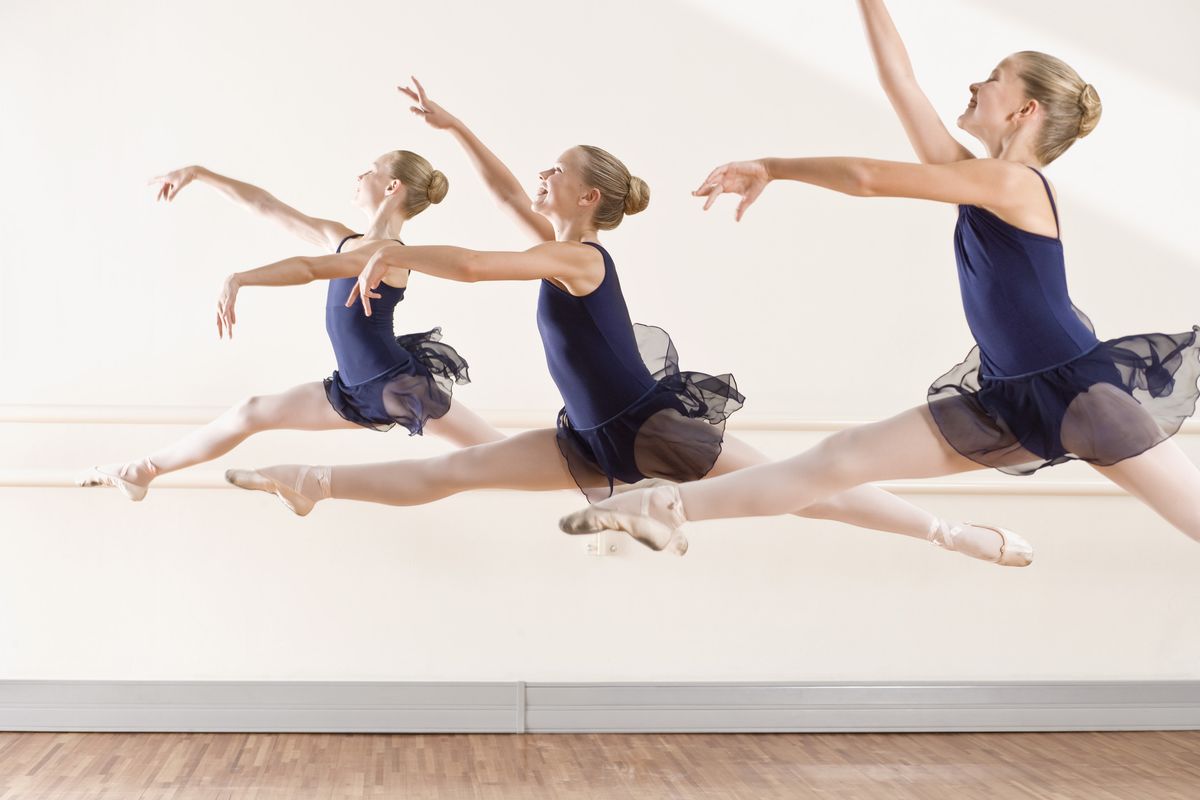

Ballet
How To Do A Ballet Leap
Modified: January 22, 2024
Learn the art of ballet and master the graceful ballet leap with our step-by-step guide. Perfect for beginners and experienced dancers alike.
(Many of the links in this article redirect to a specific reviewed product. Your purchase of these products through affiliate links helps to generate commission for AudioLover.com, at no extra cost. Learn more)
Table of Contents
Introduction
Ballet is a captivating and elegant form of dance that requires both grace and strength. One of the most breathtaking movements in ballet is the ballet leap. A ballet leap, also known as a grand jeté, showcases the dancer’s ability to effortlessly glide through the air with seemingly weightless grace. Whether you are a beginner or an experienced dancer looking to refine your technique, learning how to do a ballet leap is essential for mastering this art form.
Executing a ballet leap requires proper alignment, core strength, and dynamic movement. It combines elements of coordination, power, and control, making it a challenging yet exhilarating move to learn. In this article, we will break down the steps to achieve a beautiful ballet leap and provide valuable tips to improve your technique.
Before diving into the technical aspects, it is important to note that ballet is not just about the physicality of the movements. It is a form of storytelling through dance, with each leap serving as a moment to convey emotion or communicate a narrative. So, as you embark on your journey to master ballet leaps, remember to embrace the artistic expression and capture the essence of the dance.
Now, let’s explore the key elements of executing a stunning ballet leap.
Understanding Ballet Leaps
A ballet leap, or grand jeté, is a dynamic movement where the dancer jumps from one foot to the other, while simultaneously extending the legs and often performing a split mid-air. It is a high-flying and visually striking leap that requires a combination of strength, flexibility, and precise technique.
There are various types of ballet leaps, each with its own unique characteristics. The most common types include:
- Saute de chat: This leap involves a jump from one foot to the other, with the working leg extended to the side in a développé position.
- Grand jeté en avant: This is a forward leap, where the dancer jumps forward into the air, extending one leg in the front and the other leg in the back.
- Grand jeté en arrière: In this leap, the dancer jumps backward, extending one leg to the back and the other leg in the front.
Understanding the mechanics and dynamics of ballet leaps is crucial for executing them correctly. It begins with proper alignment and posture. Maintaining a tall and lifted upper body while engaging the core muscles helps create a strong foundation for the leap. The legs should be extended with pointed toes, and the feet should land softly and silently in alignment with the direction of the leap.
Timing and coordination are also vital components of a successful ballet leap. The leap should appear effortless and graceful, with smooth transitions between the take-off, mid-air split, and landing. This requires precise timing of the push-off from the supporting leg, strong arm movements for balance and control, and a keen sense of spatial awareness.
Lastly, the artistic expression of a ballet leap is equally important as its technical execution. Dancers must embody the emotion and intention behind the movement, using facial expressions, body language, and musicality to enhance the overall performance. A well-executed ballet leap not only showcases physical abilities but also tells a story and captivates the audience.
Now that we have a better understanding of ballet leaps, it’s time to delve into the specific techniques and preparations needed to execute this stunning movement with precision and grace.
Alignment and Posture
Proper alignment and posture are crucial for achieving balance, stability, and fluidity in ballet leaps. Maintaining the correct alignment will not only enhance the aesthetic appeal of your leaps but also reduce the risk of injuries. Let’s explore the key elements of alignment and posture in ballet leaps.
1. Vertical Alignment: Stand tall with your head aligned over your shoulders, your shoulders aligned over your hips, and your hips aligned over your ankles. Imagine a string pulling you up from the crown of your head, elongating your spine. Avoid leaning forward or backward, as it can affect your balance and hinder the execution of the leap.
2. Core Engagement: Engage your core muscles to maintain stability and control throughout the leap. Pull your abdominal muscles in and lift your pelvic floor, imagining a corset tightening around your waist. This will provide support and help you maintain a centered and controlled movement.
3. Open Chest and Shoulders: Keep your chest open and your shoulders down and relaxed. Avoid hunching or tensing your shoulders, as it can restrict your movement and affect the aesthetics of the leap. Imagine a string pulling your chest upward, elongating your upper body.
4. Proper Arm Placement: Arms play a vital role in balancing and adding grace to ballet leaps. In most leaps, the working arm is extended forward, while the other arm is extended to the side or held in a supportive position. Keep your arms rounded and fingers softly extended, maintaining a gentle energy flow through your hands and fingertips.
5. Correct Leg Alignment: Ensure proper alignment of your legs throughout the leap. Point your toes and extend your legs fully, creating long lines. The working leg should be extended with control, while the supporting leg should remain straight and engaged. Be mindful of keeping your knees aligned and avoiding any inward or outward rotation.
6. Head and Gaze: Keep your head upright and aligned with your spine, avoiding tilting or dropping your chin. Your gaze should be focused and directed slightly above the horizon. This will help maintain balance and create a visually pleasing line from head to toe.
Remember, maintaining proper alignment and posture is an ongoing practice in ballet. Regularly check your alignment in front of a mirror, and seek guidance from a ballet instructor or coach to ensure you are executing the leaps with correct form and technique.
Now that we have discussed the importance of alignment and posture, let’s move on to the preparations needed for a successful ballet leap.
Preparing for a Ballet Leap
Before executing a ballet leap, it is essential to prepare both mentally and physically. Proper preparation will help you maximize your potential and execute the leap with strength and grace. Let’s explore the key steps to prepare for a ballet leap.
1. Warm-Up: Start with a thorough warm-up to prepare your body for the physical demands of ballet leaps. Incorporate dynamic stretches, such as leg swings, lunges, and pliés, to warm up your muscles and increase their flexibility. Additionally, include cardiovascular exercises, like jumping jacks or jogging, to increase blood flow and raise your heart rate.
2. Stretching: Create a stretching routine that focuses on increasing flexibility in the key muscles used for ballet leaps. Pay close attention to stretching your hip flexors, hamstrings, quadriceps, and calves. Perform stretches such as lunges, straddle stretches, and seated forward folds to improve your range of motion for higher, more extended leaps.
3. Strengthening Exercises: Incorporate targeted strength exercises to build the necessary muscles for explosive leaps. Work on exercises that strengthen your legs, core, and back muscles. Squats, calf raises, planks, and back extensions can all contribute to enhancing the power and stability needed for ballet leaps.
4. Coordination and Dynamics: Practice coordination exercises to improve your control and precision in executing ballet leaps. Work on integrating arm movements and syncing them with your leg movements. Practice jumping and landing exercises to develop the muscle memory needed for the leap’s take-off and landing positions.
5. Visualization and Mental Preparation: Mental preparation is just as important as physical preparation. Visualize yourself executing the ballet leap with perfect technique and grace. Imagine the feeling of soaring through the air and landing with ease. This mental imagery can help enhance your focus and confidence when it comes time to perform the leap.
6. Proper Footwear: Ensure you have the appropriate ballet shoes or pointe shoes for your level of training. Proper footwear provides the necessary support and allows for better articulation of the feet, which is crucial for executing clean and precise ballet leaps.
7. Seek Guidance: If you are a beginner or looking to improve your technique, consider seeking guidance from a ballet instructor or coach. They can provide valuable feedback, correct any errors in your technique, and offer personalized tips to enhance your leaps.
By following these preparation steps, you will lay a strong foundation for executing beautiful and powerful ballet leaps. Now, let’s move on to the next section to explore the technique and mechanics of a ballet leap.
Executing the Ballet Leap
Executing a ballet leap requires a combination of strength, technique, and artistry. By understanding the key elements and mechanics involved, you can perform a ballet leap with precision and grace. Let’s delve into the step-by-step process of executing a ballet leap.
1. Preparation: Start in a strong, balanced stance with your feet together and your arms rounded in front of your body. Engage your core muscles and ensure proper alignment from head to toe.
2. Initiate the Movement: Shift your weight onto your supporting leg and bend both knees, preparing for the jump. Propel yourself upward by pushing off from the supporting leg with energy and control.
3. Extend the Legs: As you launch into the air, extend your working leg forward or backward, depending on the type of leap. Keep both legs straight and fully extended, pointing your toes and creating long lines with your body.
4. Achieve Mid-Air Split: In the peak of the leap, bring your working leg to the side or front, creating a split position in the air. Extend your arms to the side or overhead, achieving a balanced and aesthetically pleasing line from your fingertips to your toes.
5. Control and Spotting: Maintain control and stability throughout the flight by engaging your core and focusing your gaze on a fixed point. This technique, known as spotting, helps prevent dizziness and allows for a smoother landing.
6. Prepare for Landing: As you begin to descend, bring your extended leg back to meet your supporting leg. Keep your body lifted and elongated as you prepare for the landing.
7. Land Gracefully: Land softly and silently on the ball of your foot, rolling through the foot to the heel. Bend your knees to absorb the impact and ensure a smooth and controlled landing.
8. Maintain Poise: After landing, hold your finishing position with grace and poise. Keep your arms and head in line with the intended style and aesthetics of the leap. Remember to engage your core and maintain proper alignment.
Throughout the execution of the ballet leap, it is essential to maintain a sense of lightness and fluidity. Focus on breathing deeply and evenly to enhance your control and enhance the overall quality of the movement.
Remember that mastering a ballet leap takes time and practice. Start with simpler variations and gradually progress to more complex leaps as you strengthen your technique and build confidence. Analyze your performances by watching videos or seeking the guidance of a ballet instructor to identify areas for improvement.
Now that we have covered the execution of a ballet leap, let’s move on to the common mistakes to avoid and valuable tips to refine your technique.
Common Mistakes and Tips
While learning and mastering ballet leaps, it is important to be aware of common mistakes that can hinder your progress. By understanding these mistakes and implementing the following tips, you can refine your technique and execute ballet leaps with greater precision and artistry. Let’s explore some common mistakes and valuable tips to enhance your leap performance.
1. Lack of Proper Alignment: One of the most common mistakes in ballet leaps is a lack of proper alignment. Ensure that your body is aligned vertically, with your head, shoulders, hips, and ankles stacked in a straight line. Avoid leaning forward or backward, and maintain a lifted posture throughout the leap.
Tip: Use a mirror or ask for feedback from an instructor to assess your alignment. Visualization techniques can also help you maintain correct posture during the leap.
2. Insufficient Core Engagement: Failing to engage your core muscles can result in a lack of control and stability during the leap. Neglecting to activate your core can also lead to an arched back or a dropped chest, affecting the overall aesthetics of the leap.
Tip: Focus on drawing your belly button towards your spine and engaging your deep abdominal muscles throughout the leap. Practice strengthening exercises for your core, such as planks and Pilates, to build strength and stability.
3. Inadequate Take-Off: A weak take-off can adversely impact the height and power of your ballet leap. Without a strong push-off, your leap may lack height and appear less dynamic.
Tip: Prioritize developing lower body strength through exercises like squats, lunges, and calf raises. Practice explosive jumps to improve your take-off power and generate momentum for higher and more impactful leaps.
4. Improper Arm Placement: Incorrect arm placement can disrupt the flow and balance of your ballet leaps. Arms that are too stiff, too relaxed, or out of sync with leg movements can detract from the overall beauty and elegance of the leap.
Tip: Practice coordinating your arm movements with your leg movements. Keep your arms rounded, with soft and graceful hand and finger positions. Pay attention to the placement and extension of your arms, ensuring they complement the line of your body.
5. Insufficient Pointing of Toes: Neglecting to point your toes fully can diminish the overall aesthetic appeal and line of your ballet leaps. It can also disrupt the flow of movement and affect the precision of your footwork.
Tip: Pay attention to actively pointing your toes throughout the entire leap. Strengthen your ankles and feet through exercises like relevés and foot stretches to improve the flexibility and articulation of your feet.
6. Lack of Artistic Expression: Ballet is not just about the technical execution; it is also about expressing emotion and storytelling. Failing to convey the intended emotion or connect with the audience can result in a lackluster performance.
Tip: Understand the narrative or emotion behind the leap and strive to bring it to life through facial expressions, body language, and musicality. Practice performing the leap with intention and immerse yourself in the character or story you are portraying.
By being mindful of these common mistakes and implementing the provided tips, you can overcome technical hurdles, enhance your performance, and strive towards achieving beautiful and captivating ballet leaps.
Now, let’s move on to the next section, where we will explore stretching and strengthening exercises specifically targeted to improve your ability to execute ballet leaps.
Stretching and Strengthening Exercises for Ballet Leaps
To perform ballet leaps with elegance and power, it is important to incorporate stretching and strengthening exercises into your training routine. These exercises specifically target the muscles and flexibility needed to execute beautiful and controlled leaps. Let’s dive into some effective exercises to enhance your ballet leaps.
1. Deep Lunges: Start in a lunge position with one foot forward and the other foot extended back. Lower your back knee down towards the floor, feeling a stretch in the hip flexors and quadriceps of the back leg. Hold the stretch for 30 seconds and then switch sides. Deep lunges help improve flexibility and range of motion in the legs for higher and more extended leaps.
2. Straddle Stretches: Sit on the floor with legs extended wide into a straddle position. Slowly reach forward and walk your hands out as far as you comfortably can, feeling a stretch in the inner thighs and hamstrings. Hold the stretch for 30 seconds and repeat a few times. Straddle stretches improve flexibility in the hip adductors and hamstrings, allowing for greater leg extension during leaps.
3. Calf Raises: Stand with your feet hip-width apart and slowly rise up onto the balls of your feet. Hold for a few seconds and then lower back down to the starting position. Repeat for multiple sets. Calf raises strengthen the calf muscles, which are crucial for explosive take-offs and stable landings in ballet leaps.
4. Pliés: Stand with your feet turned out and shoulder-width apart. Bend your knees outwards while keeping your heels grounded. Straighten your legs to return to the starting position. Repeat for multiple sets. Pliés strengthen the muscles of the legs and help develop proper alignment and turnout, which are essential for executing ballet leaps with precision and control.
5. Arabesque Exercises: Stand facing a barre or sturdy support. Extend one leg behind you in a controlled arabesque position, keeping your torso lifted. Hold for a few seconds and then repeat on the other leg. Arabesque exercises strengthen the muscles of the back, hips, and legs, providing stability and extension during ballet leaps.
6. Core Strengthening: Strong core muscles are crucial for stability and control in ballet leaps. Incorporate exercises like planks, Pilates, and Russian twists to strengthen your abdominal and back muscles. Focus on engaging your core throughout the exercises and maintaining proper alignment.
7. Balance Exercises: Balance is key in ballet leaps. Incorporate exercises that challenge your balance, such as single-leg balances or relevés on one foot. These exercises improve stability and help you maintain control during the leaps.
It is important to note that these exercises should be performed with proper technique and gradually increased in intensity and duration as your strength and flexibility improve. Listen to your body and avoid pushing yourself too far beyond your limits to prevent injuries.
By incorporating these stretching and strengthening exercises into your regular training routine, you will develop the necessary strength, flexibility, and control to execute breathtaking ballet leaps with grace and precision.
Now, let’s conclude our exploration of ballet leaps and summarize the key points we’ve covered in this article.
Conclusion
Ballet leaps are a mesmerizing and awe-inspiring aspect of this beautiful art form. Mastering the technique and execution of ballet leaps requires dedication, practice, and a combination of strength, flexibility, and artistry. Throughout this article, we have explored the different elements involved in achieving stunning ballet leaps.
We started by understanding the dynamics and types of ballet leaps, emphasizing the importance of proper alignment and posture. We then delved into the preparations needed, including warm-up exercises, stretching, and targeted strengthening exercises. We discussed the step-by-step process of executing a ballet leap, from the take-off to the landing, with a focus on maintaining control, precision, and artistic expression.
We also addressed common mistakes to avoid and provided valuable tips to refine your technique. By being aware of these mistakes and implementing the suggested tips, you can overcome technical hurdles and elevate your leap performances.
Moreover, we highlighted the significance of incorporating stretching and strengthening exercises into your training routine. These exercises specifically target the muscles and flexibility required for executing graceful and powerful ballet leaps.
As you continue to train and improve, remember that ballet is not just about the physicality of the movements; it is a form of storytelling and artistic expression. Embrace the emotion and intention behind each leap, captivating your audience through facial expressions, body language, and musicality.
In conclusion, the journey to mastering ballet leaps is a rewarding one that allows you to push your physical boundaries, express yourself creatively, and captivate audiences with your artistry. By focusing on alignment, technique, strength, flexibility, and artistry, you can achieve breathtaking ballet leaps that leave a lasting impact.
So, take the knowledge and insight gained from this article, and embark on your journey to elevate your ballet leap technique. Embrace the beauty and power of this stunning movement, and let your passion for ballet soar through the air with each leap you execute.


